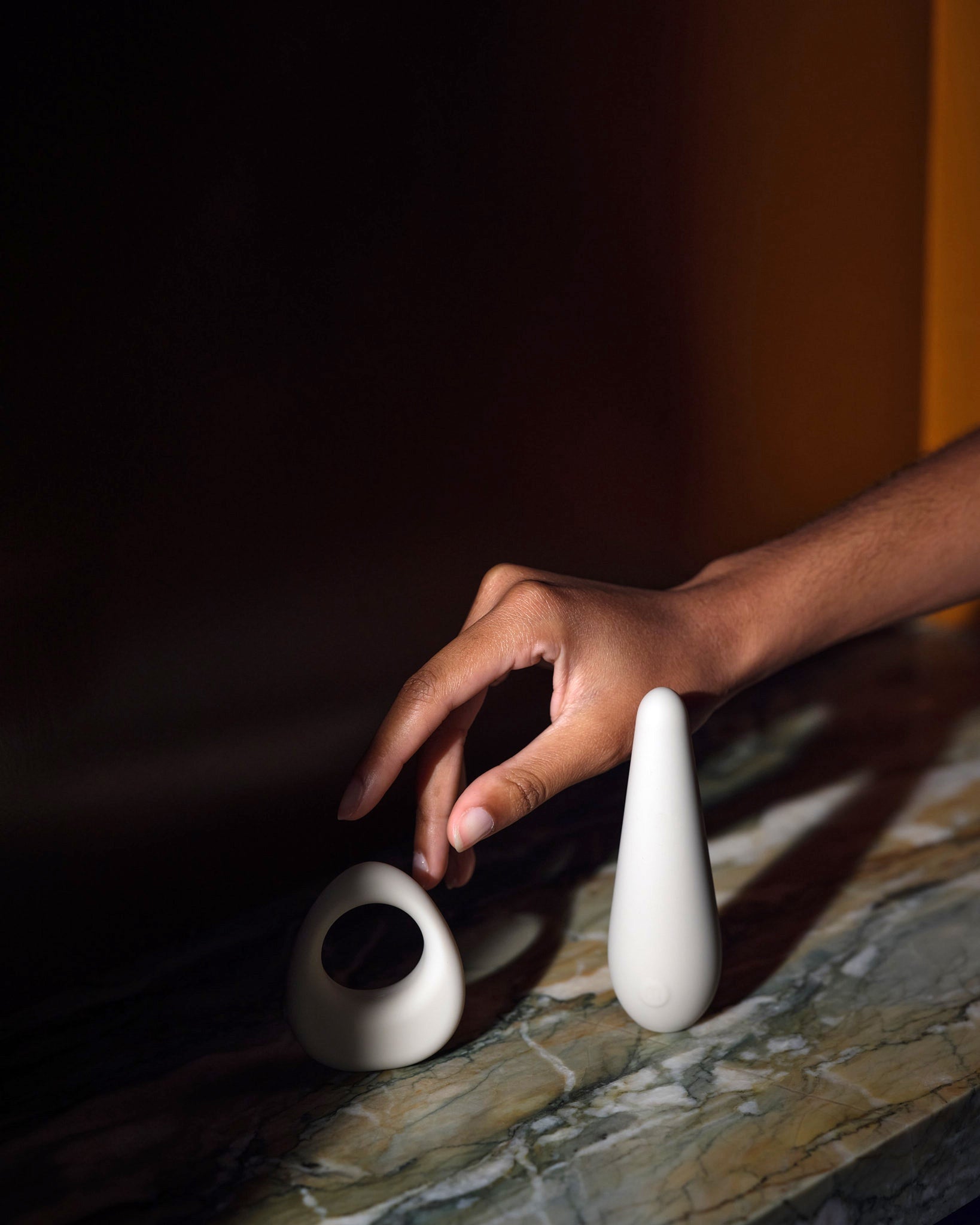What is bondage?

Here's how to start exploring the world of bondage safely.
If you’ve ever felt butterflies at the idea of being restrained, held down, cocooned, or contained—or have maybe wanted to do one of those things to someone else—you might consider exploring the world of bondage.
What is bondage sex? There’s a lot to explore. The first letter in the BDSM acronym covers a diverse range of activities. Finding out what aspects of bondage are appealing to you and learning how to pursue them is something that anyone can do, but first, a little background about what it is and how it’s done.
What is bondage?
Bondage is the practice of consensually tying, binding, or restraining someone. Though it falls under the very big umbrella of BDSM, bondage can be a “vanilla” activity. Whether erotic, aesthetic, spiritual, or what’s known as somatosensory—another way of saying it’s done because of the physical sensations it elicits—bondage, like many other activities encompassed by BDSM, is what you make of it.
What is a bondage kink? It can manifest in a few different ways—but basically, it’s about constraining in some kind of way. Some of the more common bondage devices include rope, cuffs, leather restraints, saran wrap, tape, sleepsacks, and cages. A bondage scene can incorporate sex, sadomasochism, roleplay, or be an end in and of itself.
-
Aesthetic bondage includes practices like Kinbaku, the Japanese art of rope bondage that is often referred to as Shibari by English speakers.
-
Kink bondage can use a rope to put bottoms through torture or into stressful predicaments, to immobilize, restrain, or position them according to the top’s (or rigger’s) wishes.
-
Somatosensory bondage is experienced with a mind toward changing perceptions of touch, pressure, pain, temperature, position, movement, and vibration.
More than just rope
You might be familiar with rope bondage—the aforementioned Japanese art of Kinbaku, or Shibari—but bondage can take many different forms. Leather and chains are often associated with bondage, but there are other tools and activities that do what they do: induce constraint and inhibit, limit, or control the senses. These include sensory deprivation tanks, ball-gags, masks, spreader bars, and vacuum sacks.
How do I learn about bondage?
BDSM is the conscious, risk-aware decision to engage in activities that can be dangerous. Like any other kind of BDSM, bondage of any kind can be life-threatening when done without safety precautions and proper training. Even when done properly and with the right protocol, bondage activities can cause permanent physical damage or death.
This is why educating yourself with books or by attending workshops put on by leather organizations like the Lesbian Sex Mafia is so important. Rigger and amateur gay historian Daemonumx recommends online tutorials from Shibari Study as a beginner’s guide to rope bondage and a great place to start exploring the world of bondage safely.
Bondage doesn’t have to stay in the bedroom
If you’re interested in exploring bondage a bit more, you don’t have to restrain (literally) it to bedroom activities. You can try out bondage both inside and outside of a sub-dom (or submissive-dominant) dynamic. One way to do so, which leans a bit into the “DS” part of BDSM, is to wear collars or chokers (which, of course, don’t constrain your windpipes), or an outfit that your partner chooses for you.
How to explore bondage in new ways
As previously mentioned, bondage doesn’t have to look one specific way. And as with all kinds of sex, it’s about exploring what is most exciting to both you and your partner, while keeping up good communication throughout. Don’t be afraid to make adjustments, to stop if something feels uncomfortable, or to call it off and just cuddle instead. You don’t have to go from 0 to 100 immediately, either.
Get your furniture involved
You might imagine bondage to involve complicated ropes and leather accessories (which, to be clear, it certainly can), but it can be as simple as restraining your partner to a bedframe or chair with a scarf or handcuffs. Just don’t lose the keys.
Make the most of suspension
Okay, not everyone can install a sex swing in their home. But if that option is available to you…you might as well make the most of it, no?
Take safety precautions
Sex is intimate and vulnerable in itself—and that’s especially true for any form of intimacy that falls in the BDSM wheelhouse. Trying something new in the bedroom is not something you should take lightly; have a conversation with your partner before trying bondage and take the time to make sure you’re on the same page with your boundaries.
And while you’re at it, take the time to consider basic safety precautions. If you’re doing any tying-up, don’t tie too tight—you should have space for at least two fingers between the rope, harness, whatever, and the skin. If you’re using ropes, scarves, etc., keep a pair of scissors in reach just in case of emergencies.
Safewords are an important practice in BDSM. Land on a word that you and your partner can use to know when to stop, or consider the traffic light system to let each other know if you’re reaching your limit; green is go, yellow means you’re almost at your limit, red means stop. There’s really no such thing as too much communication.
Go into it with an open mind
If you haven’t explored much in the realm of BDSM, bondage can be very intimidating! But it’s important to remember that bondage doesn’t have to look one specific way; as previously mentioned, it can be as simple as tying your partner’s hands to the headboard, maybe blindfolding them, and going to town. If you want to stick with something as straightforward as a simple hand restraint, nobody’s stopping you—and no one’s forcing you to try more complex or intense forms of bondage either. To each their own!
How to talk to your partner about bondage
When one partner has experience with bondage and the other doesn’t, it’s a good idea to have an open, judgment-free conversation about it. If you’re the one who’s done bondage before (or the one who has more of an interest in trying it), explain why you like it, what you’ve done, and what you want to do. It’s great if your partner is open-minded and willing to try something new, but if they’re not, you have to be willing to accept their boundaries, too. At the end of the day, respect is a big part of intimacy, and that goes both ways.







